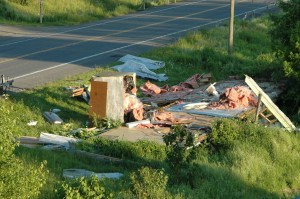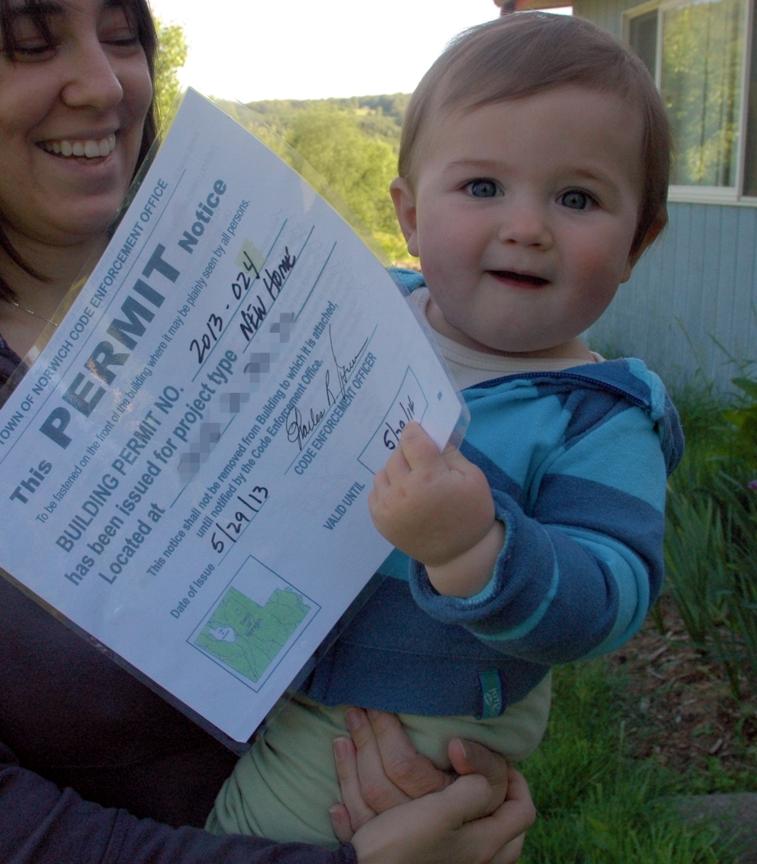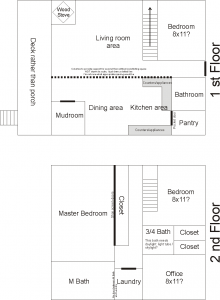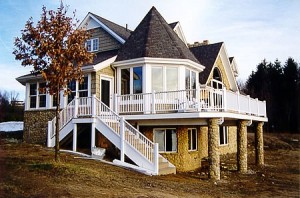Or, it was for a while at least. There were a couple of weeks there where the trailer was only half demolished, and (sorry, neighbors!) it looked a heck of a lot worse than it did when it was in one piece.
As it turned out, the first guys we gave the job to came to us and told us that they couldn’t finish it. But they brought another man with them who said that he would be happy to finish the job…which was fine with us, as long as somebody took care of it before we wanted to break ground! Without the trailer gone we wouldn’t be able to get construction vehicles onto the land without running over lilac bushes, which I would REALLY like to avoid! Lilacs are one of our favorites 🙂
So today a new group of people were out there working away, and now the trailer looks like this:
Almost there now! (Please don’t let that jinx us…)
And since it’s been a couple days of lovely (not too hot) sunshine, Baby has been out there enjoying it. That’s his grandfather in the picture.










